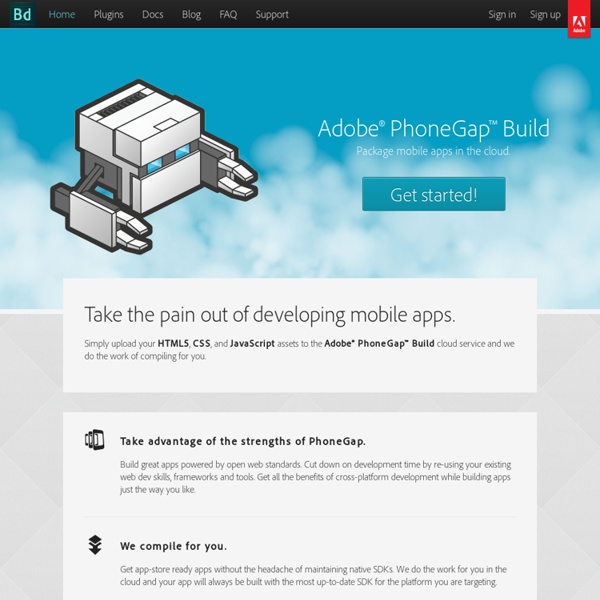



Emulating PhoneGap/Cordova Apps in the Desktop Browser Earlier this month the PhoneGap team held the first PhoneGap day. This was in part to celebrate the release of PhoneGap 2.0, but more importantly to bring together members of the PhoneGap community to share and learn from each other. There are great recaps of PhoneGap Day from RedMonk, as well as on the PhoneGap blog. One of the new services announced on PhoneGap Day was emulate.phonegap.com. Emulate.phonegap.com enables an in-browser simulator for developing and debugging PhoneGap/Cordova applications, complete with Cordova API emulation. It is built off of the Ripple Emulator, which itself is open source and may even be contributed to the Apache Cordova project.
8 jQuery And CSS Parallax Scrolling Tutorials Parallax scrolling is a type of web design where different elements of a website move at different speeds. As a user navigates through parallax websites, images will float on top of other images in several layers. Parallax scrolling sites can be used in many different ways to create a variety of captivating effects which have the potential to keep viewers on your site for a great deal of time. CSS Tools: Reset CSS The goal of a reset stylesheet is to reduce browser inconsistencies in things like default line heights, margins and font sizes of headings, and so on. The general reasoning behind this was discussed in a May 2007 post, if you're interested. Reset styles quite often appear in CSS frameworks, and the original "meyerweb reset" found its way into Blueprint, among others. The reset styles given here are intentionally very generic.
Why tables for layout is stupid: problems defined, solutions offered: Everything on one page) There are certain things that CSS does not do as well as table layouts. For instance, say you have a black side nav bar that you want to extend the whole height of your content. With a table layout, this is a piece of cake: just give that <td> a black background. We can do this with CSS, but it requires a different way of thinking. If we give our nav div a black background, the black will only extend until the nav 'runs out'. How to Make a Mobile-Friendly Website Regardless of the mobile configuration you end up using, there are some overarching mobile optimization takeaways that all marketers can benefit from. So, without further ado, here are 10 tips for creating a user-friendly, search-engine optimized mobile experience. 1.
10 Best tools and resources for web and design professionals in 2015 Tools and resources for web and design professionals are available in abundance these days, unfortunately, not all those available are as useful as we’d like them to be. In order to help you weed out some of the tools that aren’t worth your time, we’ve compiled a list of what we think are the best tools and resources available right now. 1.
Designer's guide to DPI DPI or Dots Per Inch is a measure of spatial dot density initially used in print. It's the number of ink drops your printer can put in an inch. The more dots per inch, the sharper your image. This concept is applies to computer screens under the name PPI for Pixels Per Inch. Material Design Color Palette Generator - Material Palette material palette More Material Design chevron_right Palette preview Full Palette colors below Your Palette CSS SASS LESS SVG XML PNG POLYMER DOWNLOAD TWEET Dark primary color #ffa000
Photoshop for Design Professional Website Design Software for Designers OriDomi - origami for the web